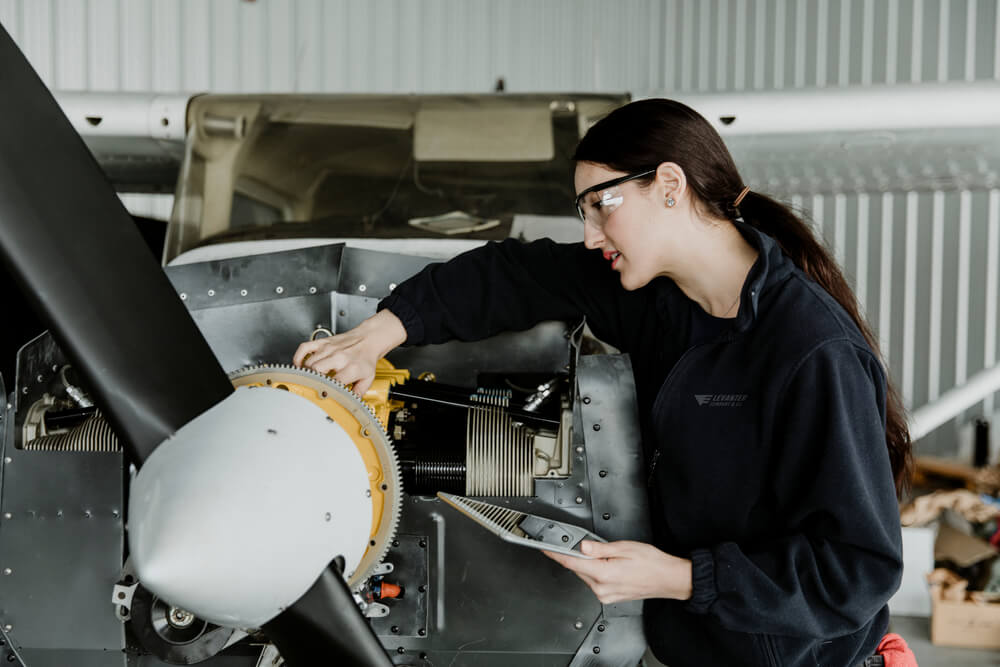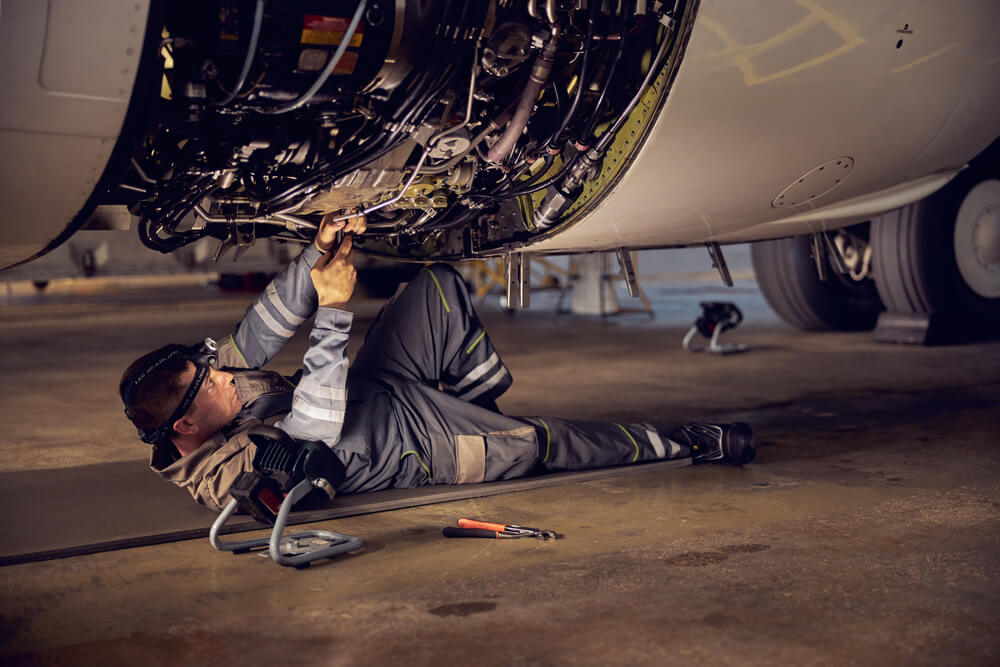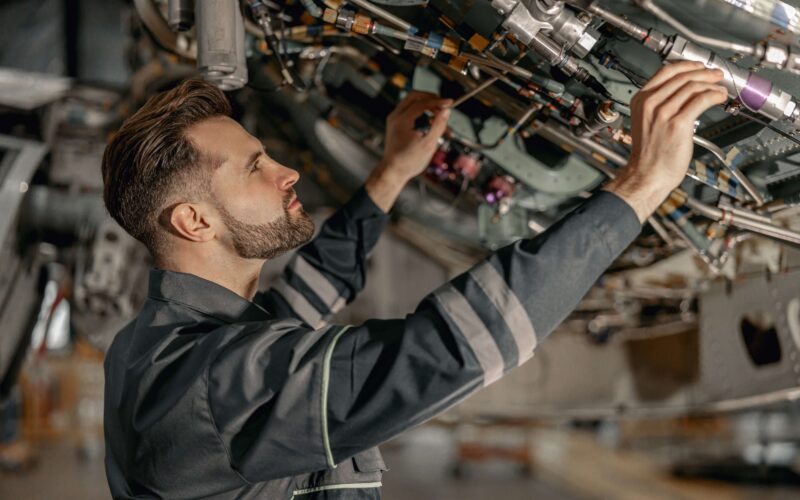For several years now, the global Maintenance, Repair and Operations (MRO) sector has faced unresolved issues relating to a shortage of aviation maintenance professionals. The aircraft mechanic’s role is considered one of the most important elements in ensuring safe operations. As such, the world’s largest original equipment manufacturers (OEMs) have warned of the dangers of the growing industry’s demand for qualified specialists, a lack of which might put pressure on the entire aerospace ecosystem.
To avoid such a scenario and mitigate against the labor shortage, aircraft manufacturers and MRO organizations have already boosted their recruitment and training efforts. Here AeroTime uncovers exactly what it takes to become an aircraft mechanic, what steps one should take to build a successful career in the field, and how many aircraft mechanics the industry is going to need in the future.

How to kick-start a career as an aviation mechanic
To kick-start a career working in a hangar, the aviation enthusiast first has to complete an entry-level course. There they become familiarized with the fundamentals of aircraft engineering, ground handling and electric systems, as well as the basics of turbine engines, safety and legislation.
Then, the newcomer is required to gain practical experience in an aviation regulator-authorized MRO organization, where they are allowed to perform some simple maintenance activities. Such tasks may include cleaning the aircraft and its parts, changing tires, replenishing hydraulic fluid and oil, or replacing non-structural aircraft cabin interior parts – seats or carpets.
However, more complex tasks and repairs are performed only by licensed and highly experienced specialists.
Pursuing an aircraft mechanic career in Europe
When starting out as an aviation mechanic in a European Union country, the candidate must follow the requirements of the European Union Aviation Safety Agency (EASA) and the Civil Aviation Authority (CAA) of the particular EASA state member. As per European regulatory requirements, a person aiming to perform maintenance activities on an EU-registered aircraft must first obtain a basic Aircraft Maintenance License (AML) without an aircraft type rating.
After gaining general maintenance knowledge and obtaining practical experience, the beginner may choose a particular plane type s/he aims to work on.
There are three main AML categories, divided into smaller subcategories, that determine professional aircraft mechanics’ capability and also put some limitations on their work routine.

Category A. An aircraft mechanic who holds the EASA Category A license is authorized to perform regular line maintenance activities. These include fluid level checks, component lubricating, and cleaning, or any other minor repair works which are performed during aircraft turnaround time. The main goal of the Category A holder is to complete troubleshooting and simple defect rectification before the next scheduled departure of the plane.
Category B1. In comparison to the Category A mechanic, the routine of the Category B1 holder consists of more complex maintenance work and requires more practical experience.
Here the mechanic is responsible for base maintenance activities that usually involve more significant repairs and overhauls under OEM and operator maintenance programs. In this case, the maintenance professional is responsible for repairs related to airframe structure, engine, mechanical and electrical systems. Such work is usually carried out in a hangar or shop and may last anything from a few days to several months.
By obtaining this category, the specialist is also provided with the right to certify a part of completed maintenance activities that had been done by less experienced staff.
Category B2. As per EASA requirements, the B2 license holders take care of jet avionics, which consists of flight control systems, such as autopilot, communication and navigation. This license authorizes the aircraft mechanic to conduct avionics maintenance and overhaul, which is performed during heavy checks, and certify a part of the work once it is completed.
Category C. The Category C license is considered an additional authorization for highly skilled aircraft mechanics who have a long record of experience in the MRO sector, have proved their professional competencies, and have been trained to perform a broader scope of tasks.
The Category C mechanic plays a key role during both line and base maintenance checks, because they are authorized to conduct inspections and sign off the Certificate of Release to Service (CRS), which determines that all work has been done in compliance with regulations and it is now safe to return the plane to active operations.
Becoming a licenced aircraft mechanic in the US
Those who dream of pursuing a fascinating aircraft mechanic career in the United States or Canada should be aware of several differences in their license acquisition processes.
Unlike in any EASA member state, the North American region follows a slightly mismatching license obtainment policy set by the Federal Aviation Administration (FAA) and Canadian regulator Transport Canada accordingly.
In countries covered by EASA, licenses are divided into three categories, but the FAA has a rule of only two main categories followed by several minor subcategories. The newcomer can choose to develop their skills either with an Airframe and Powerplant (A&P) Mechanics or Inspection Authorization (IA) Mechanics license.
Airframe and Powerplant (A&P) Mechanics. The license gives an aircraft mechanic the green light to perform both line and base maintenance checks on a jet airframe structure and components, as well as its engine.
Inspection Authorization (IA) Mechanics. While both licenses allow aircraft mechanics to conduct repair and overhaul tasks, IA Mechanics are also required to hold an FAA Inspection Authorization certificate. This allows them to perform thorough inspections and sign off airworthiness approvals before planes are returned to service.
Another significant difference between EASA and FAA procedures is a time-saving requirement of the US regulator, according to which a person must gain just 18 months-worth of practical experience before obtaining the A&P license. Unlike EASA, the FAA provides an opportunity to become a universally licensed mechanic capable of working on various planes. Meanwhile, EASA requires a candidate to collect at least three years of practice before they can obtain a non-type-rated AML.
Types of aircraft mechanic license in Canada
However, if a newcomer to the MRO industry decides to work on planes registered in Canada, they will have to meet the local licensing policy that incorporates another two main categories: the Aircraft Maintenance Engineer and Avionics Maintenance Engineer, which are recognized by EASA.
The Aircraft Maintenance Engineer license, which is divided into four smaller subcategories, authorizes the mechanic to perform repairs and overhaul tasks on any aircraft type, including its airframe, avionics and engines, as well as hydraulic and electrical systems.
The Avionics Maintenance Engineer license, which has two subcategories, makes the mechanic specialized in avionics systems only.
However, unlike the FAA, Transport Canada requires a long four-year period of practical experience before the trainee gets the awaited approval.
Having already obtained a license, though, is it possible to convert it and work in a foreign country if required?
Once in possession of a valid EASA-issued AML with a type rating, the aircraft mechanic can convert the EU license to the FAA-approved A&P license if s/he can provide verification of at least 18 months-worth of previous experience in the field. The US aviation regulator’s appointed inspector will also require the specialist to pass several exams, including written, oral and practical checks.
However, when it comes to Transport Canada policy, a direct conversion of the aircraft mechanic license is achievable only when it is issued by a country that has a bilateral agreement with Canada.
Otherwise, the conversion is unachievable.
Bright future prospects
In a recently updated Commercial Market Outlook (CMO), the US-based aircraft manufacturer Boeing estimated that the aviation industry should fully return to pre-pandemic levels of 2019 by 2024.
Projecting the $3.6 trillion-worth commercial support and services market, the OEM forecasts that the MRO sector will need at least 610,000 new aircraft mechanics over the next two decades to meet the growing demand from airlines and maintenance organizations.
Why not consider becoming one of them?

